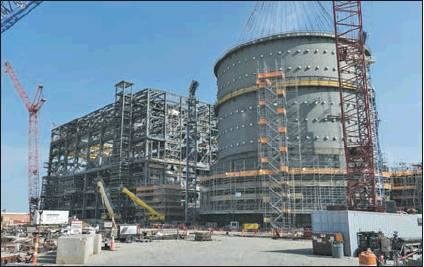SC Electric & Gas: 2018 in Retrospect
How SCE&G’s nuclear dream failed
Looking back on 10 years of fruitless nuclear effort, one thing seems clear:
SC Electric & Gas, its owners at Lexington County-based SCANA Corp., its partners at Santee Cooper and its …
This item is available in full to subscribers.
Subscribe to continue reading. Already a subscriber? Sign in
Get 50% of all subscriptions for a limited time. Subscribe today.
Please log in to continueNeed an account?
|
SC Electric & Gas: 2018 in Retrospect
How SCE&G’s nuclear dream failed
Looking back on 10 years of fruitless nuclear effort, one thing seems clear:
SC Electric & Gas, its owners at Lexington County-based SCANA Corp., its partners at Santee Cooper and its contractors did not know what they were doing – or seem to care.
Inaccurate plans and pressures turned a nuclear dream into a nightmare.
Before SCANA contractors started work on its 2 nuclear reactors, Westinghouse attorneys were hard at work drafting a legal opinion.
SCANA had received its delayed federal construction license, but the project was already behind a schedule it gave regulators, according to findings of the Charleston Post and Courier.
Trees had been cleared and roads built. Pressure on contractors mounted.
Only 40% of the construction design was complete.
The deadline for federal tax credits loomed.
SCANA had finally started pouring concrete. But building 2 nuclear reactors requires specific plans.
SCANA executives asked Westinghouse if state engineering laws were needed.
Westinghouse’s deputy general counsel drafted a 13-page legal opinion on May 7, 2012, arguing the engineering laws in South Carolina didn’t apply. He said federal licenses superseded state requirements.
Westinghouse executives received the opinion as did the director of nuclear engineering for Shaw, one of the original contractors.
But Santee Cooper officials say that as SCANA’s 45% minority partner they were never notified.
Hiring professional engineers to approve plans would waste time and money, the attorney wrote.
The Department of Health and Environmental Control and other state agencies had to see some reactor plans.
Westinghouse lawyers assured SCANA that state regulators would review plans and they would be approved by professional engineers.
But they did not guarantee this would be done for the 2 potentially dangerous nuclear reactors.
As executives told the Public Service Commission and the Office of Regulatory Staff that they needed higher rates, engineers said Westinghouse and SCANA ignored their own professionals’ concerns.
By 2015, an estimated 600 engineering changes were made a month, according to a secret analysis from Bechtel, the largest US civil engineering firm.
Bechtel suspected Westinghouse’s planners were barely keeping up with construction, and their drawings, the audit found, were “often not constructible.”
Design changes, Bechtel auditors found, made it difficult for construction crews to know if they were working on the right blueprints.
After they poured concrete, workers realized a Westinghouse designer in Pittsburgh had made a mistake that cost millions of dollars and months to fix.
When SCE&G engineers realized drawings weren’t officially sealed, the issue became serious.
Concerns about unlicensed engineering were slapped down by senior SCANA management.
“It put us in a terrible situation,” one engineer said. “If we raised the issue, we were tagged as troublemakers.”
Delays, incorrect parts, thousands of engineering changes, and billions of wasted dollars can be traced to faulty drawings produced by unlicensed people working off site.
“Everything else on this project was incompetence,” said an engineer who asked to remain anonymous. “This was criminal.”
Today the site in nearby Fairfield County sits abandoned.
State officials and SCE&G personnel are doing what they can to salvage and protect millions of dollars worth of construction materials.
Unless an appeal is successful, Dominion Energy will take over SCANA and SCE&G and Santee Cooper ratepayers will be stuck with the bill.
And the executives who let the project fail will share $115 million in severance pay.
No wonder thousands of ratepayers are upset.
Other items that may interest you







Comments
No comments on this item Please log in to comment by clicking here